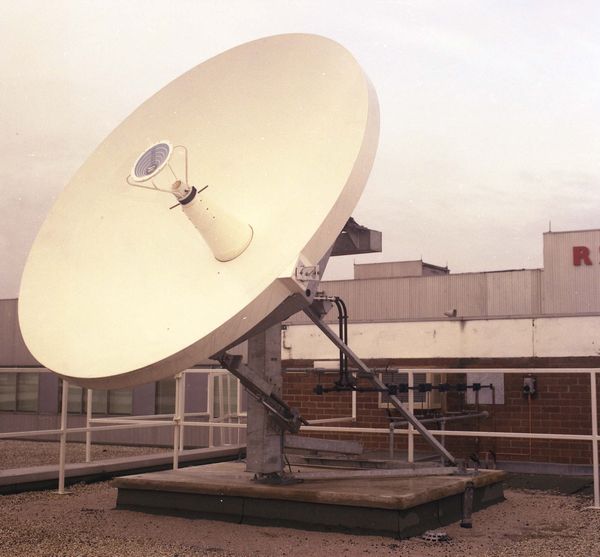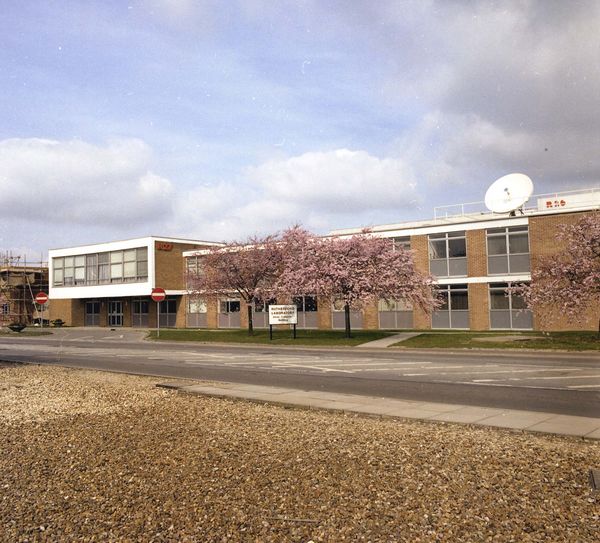

In 1975 the Commission of the European Communities proposed to sponsor experiments involving the European Informatics Network, the European Space Agency prototype satellite OTS, some national laboratories and the CERN Laboratory.
An international meeting in July 1976 at Rutherford Laboratory discussed the problem. Lack of information on user requirements for distributed data processing systems, and particularly for public data transmission services, were the weak link in efforts to establish a technical policy. There was a large, scattered population of potential users with a wide range of experience, knowledge and perception of future needs.
In 1976, John Burren's Group started a collaboration with CERN, DESY and ESA (European Space Agency) on high speed data transmission experiments via the ESA Orbital Test Satellite (OTS).
CERN had several hundred particle physicists working at CERN and processing data both there and at their home laboratories. The Commission offered the chance to try out wide-band data transmission facilities in a working environment through the STELLA project (Satellite Transmission Experiment Linking Laboratories). Rutherford became a member of the project.
STELLA planned to link CERN, DESY, Pisa, Rutherford and Saclay via their associated computer centres. OTS was successfully launched from Cape Canaveral in May 1978 and assumed a geostationary orbit.
The Department of Industry funded a small ground station at the Rutherford Laboratory consisting of a 3m diameter dish aerial which was linked to an existing GEC 4080 computer. The dish was built by Marconi Communication Systems Ltd and installed on top of Building R27 in September 1979.
Responsibility for the hardware and software required to drive the various Earth stations was shared amongst the participants. RAL was responsible for the software to be used in the link-driving computer. Physicists working at CERN would be able to transfer data and enter processing jobs from their local workstation at CERN to run on the IBM 360/195.
The Stella Dish was up and running by November 1979. It was linked to a GEC 4080 in the main computer room in the Atlas Centre via an interface developed in conjunction with CERN.


A special-purpose modem, designed to work at high speed (2 Mbit/sec), was developed by Marconi to convert the digital information into an analogue form for transmission via the satellite. This modem initially gave problems due to its sensitivity to strings of repeated ones or zeros. A slight redesign of the interface eliminated the problem and data was reliably sent to the satellite and back with a bit error rate in the worst case around 10-7. That was satisfactory but not exceptional.
A Marconi ground station was installed at CERN and handed over to the Swiss PTT in December 1979. By January 1980, the CERN station was transmitting to the satellite and by February 1980 received at RAL. Protocol testing between CERN, Pisa and RAL was completed during 1980 and operational procedures at CERN and RAL were set up so that users could send their magnetic tapes via this link.
The initial system enabled 1600 bpi magnetic tapes to be copied from CERN to Rutherford Laboratory. It was then extended to allow CERN physicists to use CERNET to transmit their data to their link-driving NORD 10 computer. Data was then recorded on magnetic tape and transmitted later via the satellite.
Late in 1980, the travelling wave tube klystron in the high power amplifier failed and caused an interruption of 3 to 4 weeks in the service. The bit error rate was improved to 10 -8 but no further.
An Ethernet connection between the STELLA GEC 4080 and VM in the IBM 3032 was developed which allowed files to be transferred at high speed. These files could then be transmitted via the satellite, either directly or by saving them for transmission later. The transfer rate was limited by the filing system on the 4080 and was of the order of 100 kbit/sec.
The project was a success in establishing a satellite link between RAL and CERN and was the first use of IP at CERN. However, the transmission rates were not that great and it turned out that a CERN physicist with hand luggage filled with magnetic tapes could achieve a higher transmission rate between CERN and RAL.